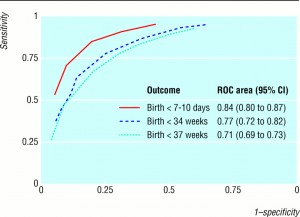FOCUSING ON SYMPTOMS
Even if you can’t immediately feel a separation, stay with the symptom process for up to a minute or two. Focus without telling a story, complaining, or running away from it. Know, for now, that this is enough; the separation will come with practice. Do this without getting attached to the outcome. Soon you will find that your separation from the symptom and the genuine realization that “I am not the symptom’’ will arise naturally. As you practice, you begin to distance yourself from the wheezing, coughing, tightness, or heaviness, which in turn gives you a sense of empowerment, release, and relief. 
DRAWING THE SYMPTOM
Drawing the symptom is another technique for Focusing, one that is nonverbal and that can actually be FUN. It helps create a separation from the symptom by bringing the inside (your beliefs, images, feelings, sensations, and thoughts) to the outside through the drawing. This process is simple.
After using the Focusing process, Nicole, whose asthmatic symptoms had recently recurred, drew a picture of her symptom.
In her drawing, only the top part of her body appeared. Her breathing passages looked like tiny, narrow tubes, and she drew her lungs as shrunken and folded in on themselves. Nicole explained that drawing the symptom and seeing it on paper made her understand what her body was going through. She said it helped her to separate from the feelings of fear that made the symptom worse. “It’s as if putting it out here gives me relief and more space to breathe in there,” she said, first touching the paper, then her chest.
Nicole felt the image of the narrow tubes and shrunken lungs was in many ways analogous to her life. During the past two years she had experienced a narrowing down of opportunities, a shrinking of joy and pleasure. Her career as a singer, which had brought her admiration and status, came to a halt when she shifted gears and chose to go into acting instead. But the acting world refused to welcome her with open arms as she had hoped. Her social life had also become restricted since her divorce.
The wasted lungs mirrored Nicole’s belief that she was wasting her life — not only her physical life, but her inner life as well. Nicole described her mother as loving, though judgmental and controlling. Each time they spoke, her mother’s comments and tone of voice reminded her that she was no longer a somebody.
www.instagram.com/healthcaremall – Instagram Canadian Health and Care Mall.
Through the drawing exercise, Nicole realized she could make different choices, which would enhance her healing. She decided to release the limiting belief that she was a nobody. Rather than replacing it with a new belief, she decided she would stay in the “don’t know” space and see what happened.

